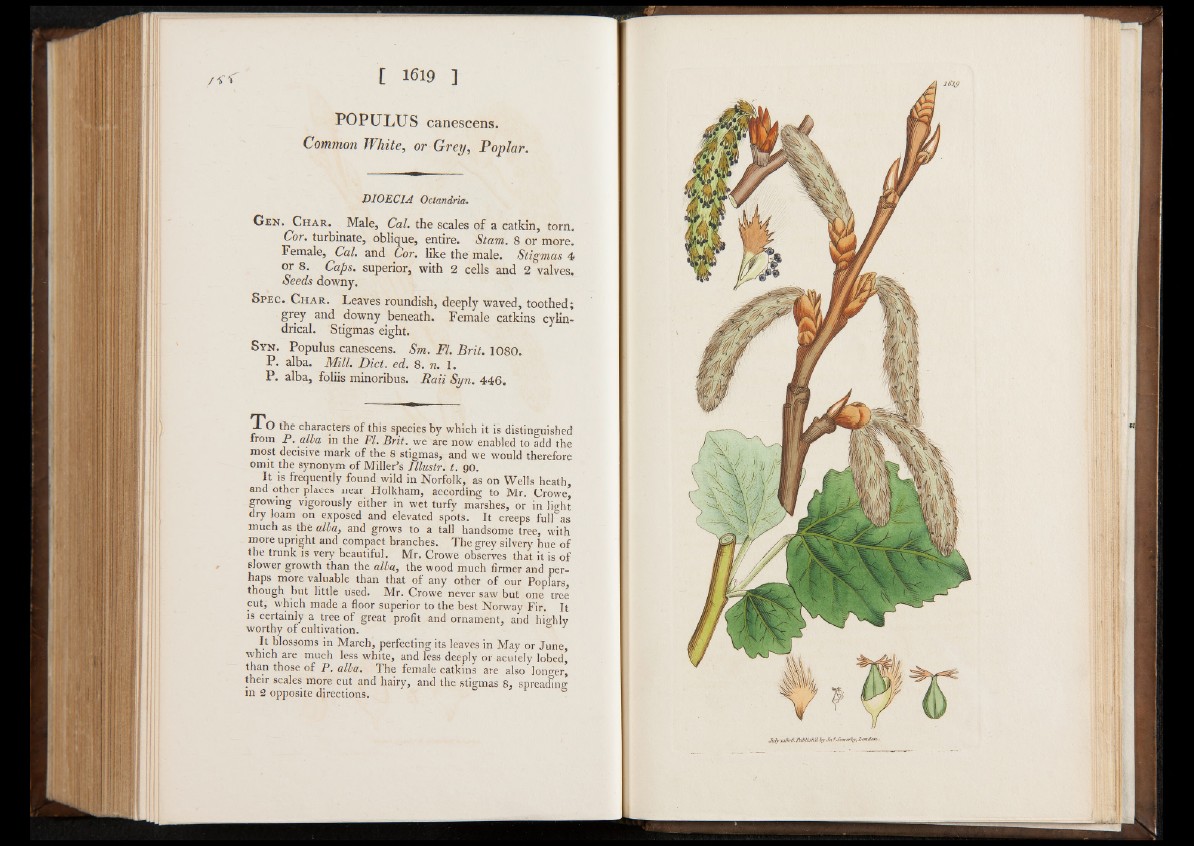
P O P U L U S can esc en s.
Common White, or Grey, Poplar.
DIOECIA Octandria.
Gen. Char. ^ Male, Cal. the scales of a catkin, torn.
Cor. turbinate, oblique, entire. Stam. 8 or more.
Female, Cal. and Cor. like the male. Stigmas 4
or 8. Caps, superior, with 2 cells and 2 valves.
Seeds downy.
Spec. Char. Leaves roundish, deeply waved, toothed;
grey and downy beneath. Female catkins cylindrical.
Stigmas eight.
Syn. Populus canescens. Sm. FI. Brit. 1080.
P. alba. M ill. Diet. ed. 8. n. 1.
P. alba, foliis minoribus. Ran Syn. 446.
T o the characters of this species by which it is distinguished
from P. alia in the FI. Brit, we are now enabled to add the
most decisive mark of the 8 stigmas, and we would therefore
omit the synonym of Miller’s lllustr. t. 90.
It is frequently found wild in Norfolk, as on Wells heath,
and other places near Holkham, according to Mr. Crowe’
growing vigorously either in wet turfy marshes, or in livht
dry loam on exposed and elevated spots. It creeps full°as
much as the alia, and grows to a tall handsome tree, with
more upright and compact branches. The grey silvery hue of
the trunk is very beautiful. Mr. Crowe observes that it is of
slower growth than the alia, the wood much firmer and perhaps
more valuable than that of any other of our Poplars,
though but little used. Mr. Crowe never saw but one tree
cut, which made a floor superior to the best Norway Fir. It
is certainly a tree of great profit and ornament, and highly
worthy of cultivation. ° 3
It blossoms in March, perfecting its leaves in May or June,
which are much less white, and less deeply or acutely lobed’
than those of P. alia.. The female catkins are also longer,
their scales more cut and hairy, and the stigmas 8, spreading
1» 2 opposite directions. .